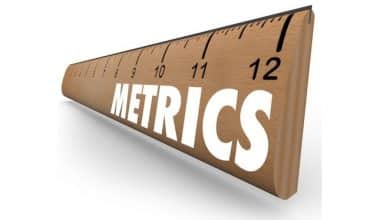Learning how to write a formal email may seem difficult, especially if it’s your first time. A formal email must have a professional tone, and this is why many individuals find it hard to construct one. However, if you have a step-by-step detailed guide, writing a formal email will be a simple process. Below is a breakdown of the necessary steps to follow, and all you need to know while writing a formal email.
How To Write a Formal Email
In order for you to properly learn how to write a formal email, you’ll need to know exactly what it’s all about. So, what is a formal email? A formal email is the same thing as a professional email. It is written to individuals in authority, business organizations, academic institutions or people you’re not familiar with.
While writing a formal email, your choice of language is one of the most important things. Since you are not writing to someone familiar, then it is very necessary to use a professional tone. This automatically shows a sign of respect. Also, another thing you need to take note of is your punctuation, as this contributes highly to the structure of the email.
Steps to Follow While Writing a Formal Email
If you want to learn how to write a formal email properly, then there is a certain format you need to follow. Below is a list of step-by-step guides you need to follow while writing a formal email. They include:
- Start with a professional email address
- Write a subject line
- Begin the paragraph with a formal salutation
- Make a proper introduction
- The body
- End the email formally, with appreciation
#1 Start with a professional email address
Before you start a formal email, you will need to confirm if the email address is a professional one. A professional email address is simply an email that is used strictly for business affairs. This is how most individuals interact with companies and business organizations. With the help of a professional email address, people are able to differentiate their personal messages from business-related ones.
Also, a professional email contains your business name. This makes it easier for individuals and other businesses to recognize you.
#2 Write a subject line
Paying attention to the content of your subject line while writing a formal email is essential. It is the first thing seen when a person opens their inbox. This is done to help the person know what the content of your email is about. A subject line should state clearly the purpose of the email. It should be short and catchy, at the same time not misleading. Do not attempt to trick a recipient into reading your email, or else your email may be drafted or not responded to.
#3 Begin the paragraph with a formal salutation
After inputting a subject line, the next step is to begin the email with a formal salutation. Paying attention to the salutation is also important because it directly addresses the person you’re sending the email to. Some of examples of salutation are:
- Greetings
- Dear
- Hello
- To whom it may concern
Many times, the name of the individual being addressed in an email is not known. If you do not have the recipient’s name then you can use “to whom it may concern” or “Dear sir/ma”. Also, you can address the person’s department or position. For instance: Dear HR Manager, Dear HR Department.
However, if you have the recipient’s name, use “Dear”, followed by the person’s name. For example, Dear Professor Williams or Greetings Professor Williams (followed by the surname).
#4 Make a proper introduction
An introduction comes right after the salutation. When it comes to formal emails, there is always a need for an introduction because you are not known. Even if the recipient knows you, there is still a need for you to introduce yourself.
The introduction begins with you stating your name, followed by your purpose and relevance. For instance, a teacher or lecturer will like to know whether you’re writing as a member of the class, department, or faculty. After this, state the reason for writing.
#5 The body
The body of a formal email is basically where you explain in detail the reason for writing. Elaboration is essential, but it should not be exaggerated. The body of an email should contain at least one or two paragraphs, (depending on the purpose of the email).
#6 End the email formally with appreciation
How you end an email is as important as the way you started it. Since it started formally, its ending has to be formal too. This is the last paragraph and it is also referred to as the closing paragraph.
In this paragraph, you have to show appreciation for the time spent reading your email, then end it with a formal closing. Some of these formal closings are:
- Sincerely
- Faithfully
- Yours
- With respect
- Best
- Regards
After choosing a formal closing, your name and signature should follow.
How Do You Start a Formal Email?
Whether you are trying to get a business contract, ask for a salary raise, or secure a new job, learning how to start a formal email will give you the upper hand. A formal email starts with a professional email address. It is advisable for you to make use of a professional email address while writing a formal email, as this gives it more recognition and presents it as important. A professional email should include your first and last name or the name of your business. This adds to the value of the email, as the recipient may see it as important.
After confirming the email address as professional, the next thing to pay attention to is your subject line. The subject line of your email should boldly state your reason for writing the email. For example, a letter of apology, asking for a salary increase, permission to go on a break, etc. It should be short and catchy, but also professional.
Another equally important part of starting a formal email is the salutation (a friendly greeting). Having a proper salutation opens up your email and gets you started on the right foot. You can start with ‘’to whom it may concern’’, but this is only used when you do not know the name of the person you’re addressing. Dear and hello is also popular salutation used, followed by the recipient’s name or position.
How Do You Start a Formal Email Paragraph?
The first paragraph of a formal email has to include a salutation and the name of the person you’re addressing. You can make use of ‘’Dear or Hello’’. These are the most common salutations. Moreover, there are times when you may not know the recipient’s name. In situations like this, the proper salutation to use is ‘’To whom it may concern’’. The next step is to introduce yourself properly, by stating your name, who you are, and why you’re writing.
What Is a Good Opening Sentence for an Email?
Starting an email with a good opening sentence is what keeps your reader going, so it is advisable to be careful with your choice of words. After the salutation, comes the opening sentence. Formally, an opening sentence should include a proper introduction (stating your name and who you are), and the reason why you are writing. Informally, an opening sentence will include greetings and well-being. For example, ‘’I hope this email finds you well’’, ‘’hope you had a great day’’, etc, and an introduction stating your name and the reason you’re writing.
How Do You Write a Formal Email Example?
Attempting to write a formal email example is basically just practicing how to write a formal email. In order for you to do this, there are steps you need to follow. Below is a guide explaining what you should do while writing a formal email example. They are:
- Your email subject: it should be short and clearly state the reason for your email
- The salutation: Dear (the name of the person or people you are addressing) eg, Dear Professor Williams, for a group Dear Students. If you do not have the name of the recipient, then use ‘’To whom it may concern’’.
- Introductory paragraph: Use this paragraph to introduce yourself (stating who you are), and the reason you are writing.
- Email body: This part of the email should contain details, explaining why you are writing.
- Closing paragraph: The closing paragraph should end formally, eg sincerely, faithfully, best regards, etc.
What Are the Five (5) Parts of a Formal Email?
Before a person can properly learn how to write a formal email, you need to follow a particular structure and format. This format contains the five (5) elements of a formal email. These elements are:
- The subject line
- Salutation
- Introductory paragraph
- Email body
- Closing paragraph
These are the five elements that make up a formal email. By applying these elements, you will be able to properly write a formal email.
How To Write a Formal Email For a Request
Learning how to write a request in a formal email is essential for every individual. A request means asking for something. In order for you to do this properly, you need to stick to a particular structure. Below is a detailed guide on how to write a formal email for a request. They include:
#1 Salutation and introductory paragraph
In the process of writing a request, you can’t just jump into it right away. You’ll still have to follow the format of writing a formal email. As mentioned earlier, you have to begin with a salutation. You can use either ‘’Dear or Hello’’. It is advisable to make use of dear because it sounds more formal. Immediately after the salutation, comes the name of the recipient. For example, Dear MRS Smith. If you don’t have the name of the recipient then use ‘’To whom it may concern’’.
Furthermore, the introductory paragraph must include your name, a reference to the connection you have with the recipient, and your reason for writing. For instance, Dear HR Director, my name is *****, I am one of the newly employed writers and I’m writing to request for ****. By stating all these, the recipient knows who you are and why you are writing.
#2 The body
The body of a formal request should explain in detail, what the request is and the reasons why it should be granted. It should also be stated whether the request is urgent or not. This creates a leeway for the recipient to consider granting your request.
#3 Closing paragraph
This part of a formal request is very important. In the closing paragraph, you have to show appreciation by thanking your recipient for taking the time to read your email. After doing that, end it formally by making use of best regards, faithfully, sincerely, etc.
Conclusion
Learning how to write a formal email may seem difficult, especially when you do not have any experience. However, if you stick to a particular structure or format, writing a formal email will be very easy. All you need to do is apply the elements and this will teach you how to properly write a formal email.
Related Articles
EMAIL MANAGEMENT: Meaning, Software, Strategy & Skills
INTRODUCTION EMAIL SAMPLE: Best Way to Start & End
PROFESSIONAL EMAIL: Meaning, How to Write it & Crucial Tips to Know






